Cambodia
Things to DO
Phnom Phen
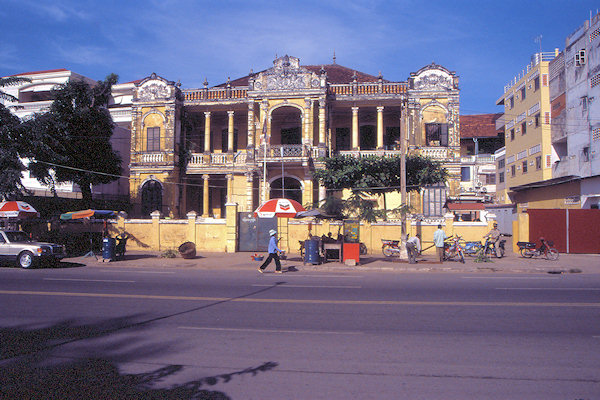 |
|||||
At times beautiful and beguiling, at times desperate and distressing, Phnom Pehn is a crossroad of Asia's past
and present, a city of extremes of poverty and excess, but one thet never fails to captivate the visitor.
Long considered the loveliest of the French-built cities of Indochina, its charm, while tarnished, has largely managed to survive
the violence of its recent history and the present invasion of property speculators and motor vehicles.
The French left a legacy of now-crumbling colonial architecture, some of which has been tastefully renovated: the wats come back to
life with a passion - monks in saffron robes can be seen wandering around carrying alms bowls and sidewalk restaurants have sprung
up all over the city, a great prelude to some pretty lively nightlife at weekends.
The riverfront area in Phnom Pehn is undoubtedly one of the most splendidi in Asia, lined with swaying palms and billowing flags,
the mightiest river in Asia converging and diverging as a backdrop.
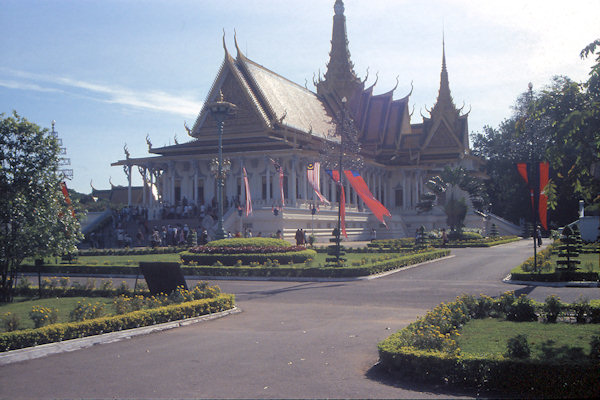 |
|||||
The Royal Palace; a striking structure near the riverfront was constructed between 1866 and 1870, after King Norodom
relocated the royal capital from Oudong to Phnom Penh.
The Throne Hall, topped by a 59m-highht tower inspired by the Bayon at Angkor, was inaugurated in 1919 by King Sisowath; the
present cement building replaced a vast wooden structure that was built on this site in 1869.
The Silver Pagoda, so named because the floor is covered with over 5.000 silver tiles weighing 1kg each, was constructed of wood
in 1892 during the rule of King Norodom and was rebuilt in 1962.
Other structures in the complex include the mondap (library), which housed richly illuminated sacred texts that are written on palm
leaves; Phochani Pavilion (dance hall) and the shrine of King Norodom.
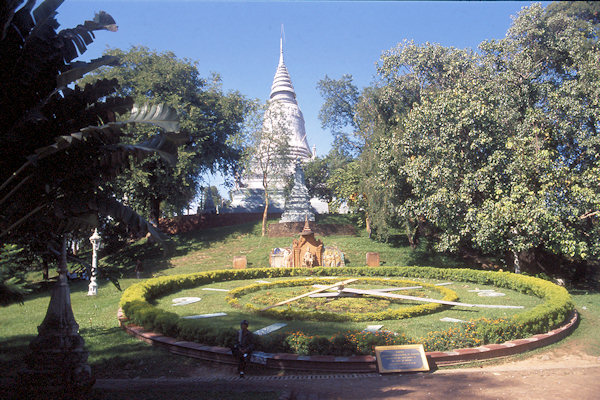 |
|||||
Set on top of a 27m-high tree-covered knoll, Wat Phnom is the only hill in town. According to legend, the first pagoda on
this site was erected in 1373 to house four statues of Buddha deposited here by the waters of the Mekong River and discovered by a
woman named Pehn. The town that emerged around the hill came to be known as Phnom Penh
("Hill of Penh")
The "vihara" (temple sanctuary) was rebuilt man time - the last in 1926.
West of the vihara is a hudge stupa containing the ashes of King Ponhea Yat (reigned in 1406-1467)
Today, many people come here to pray for good luck and success in school exams or busniss affairs. When a petitioner's wish is
granted, he or she returns to make the offering (such as garland of jasmine flowers or a bunch of bananas) promished when the request
was made.
In a pavilion on the southern side of the passage between the vihara and the stupa is a statue of a smiling and rather plumb Madame Penh.
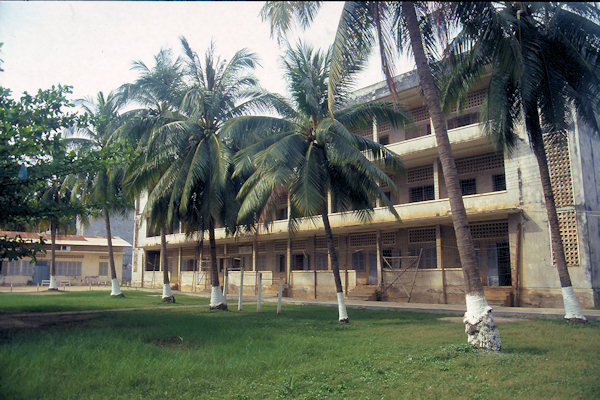 |
|||||
Tuol Sleng Museum
In 1975 Tuol Svay Prey High school was taken over by Pol Pot's security forces and turned into a prison know as Security Prison 21
(S-21).
This soon became the largest centre of detention and torture in the country. Between 1975 and 1978 more then 17.000 people held at
S-21 were taken to the extermination camp at Choeung Enk.
The museum displays include room after room of harrowing black and white photographs; virtually all of the men, woman and children
pictured were later killed.
Altogether a visit to Tuol Sleng is a profoundly depressing experience; it demonstrates the darkest side of the human spirit that
lurks within us.
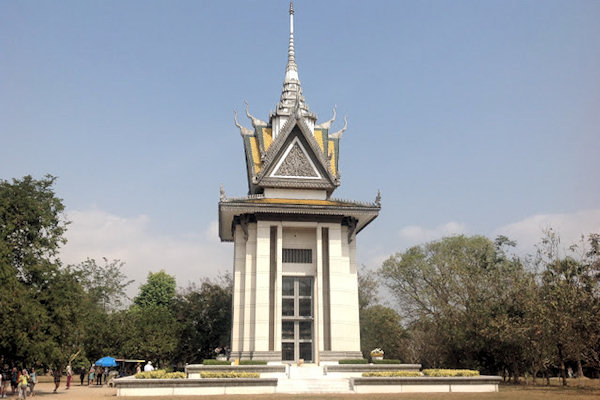 |
|||||
Killing Fields of Choeung Ek
Between 1975 and 1978 all the men, woman, children and infants who had been detained and tortured at S-21 were transported to the
extermination camp of choeung Ek. They were often bludgeoned to death to avoid wasting precious bullets.
The remains of 8.985 people, many of whom were bound and blindfolded, were exhumed in 1980 from mass graves in this one-time longan
orchard. Fragments of human bone and bits of cloth are scattered around the disinterred pits.
More then 8.000 skulls, arranged by sex and age, are visible behind the clear glass panels of the Memorial Stupa, which was erected
in 1988.
It is a peaceful place today, masking the horrors that unfolded here less then tree decades ago.
Takeo
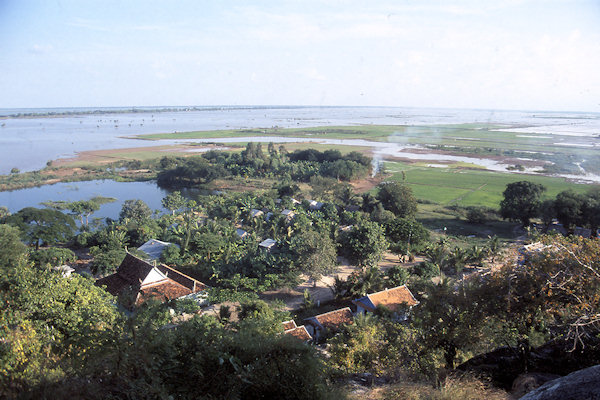 |
|||||
Often referred to as "the cradle of Cambodian civilisation", Takeo Province includes several important pre-Angkorian sites
built during the 5th to 8th centuries.
This whole area was part of what Chinese annals called "Water Chenla", no doubt a reference to the extensive annual
floods thet still blanket much of the province.
It would have been an important kingdom among several smaller states that existed at that time; its principal centre was at Ankgor
Borei, with other smaller religious centers at Phnom Chisor. Places such as Phnom Chisor continued to exact a tight hold
on the kings of Angkor and many came to pay tribute to their ancestors in elaborate ceremonies.
Today Takeo is primarily a province of farming and fishing that sees a healthy number of tourists visiting the temples.
While the town is nothing particularly spectacular, it is the closest provincial town to the capital and it's easy to score a slic of
real Cambodian life here.
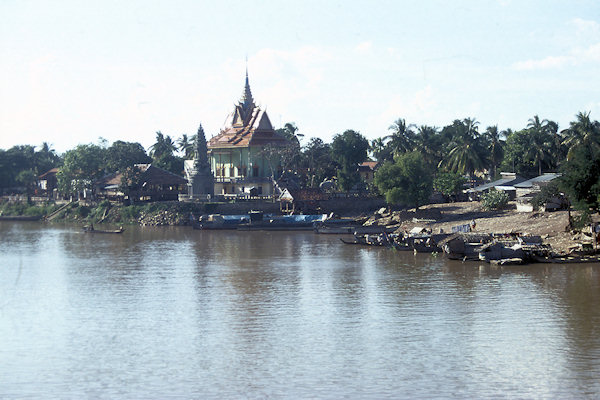 |
|||||
Angkor Borei
Angkor Borei was know as Vyadhapura when it served as the capital of Water Chenla in the 8th century. It is one of the earliest
pre-Angkorian sites in Cambodia, dating back to the 5th century.
Angkor Borei is actually a small modern town, but in this instance it is used to refer to the remains of an ancient walled city in
the vicinity. The town has a small museum, set up with assistance from the European Union in 1997.
Phnom Da
A few kilometres south of Angkor Borei is the hill of Phnom Da. Four artificial caves, built as shrines, are carved into the
northeastern wall of the hill. On top of Phnom Da is a square laterite temple open to the north, dating from the 8th century.
In the wet season, it is only possible to reach Phnom Da by water, as the hill becomes an island spectaculary isolated by annual floods.
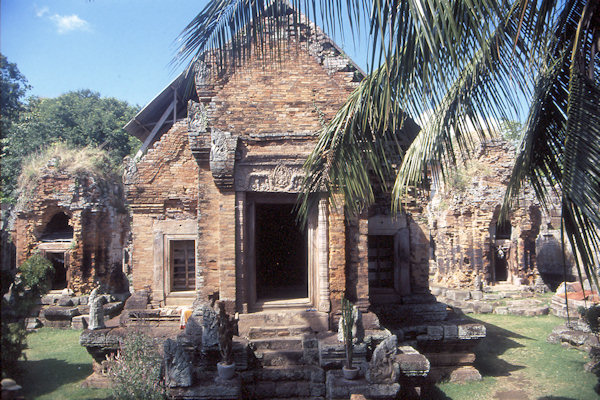 |
|||||
Phnom Chisor
A temple from Angkorian era, Phnom Chisor is set upon a solitary hill in Takeo province, about 26 km north of Takeo.
Try to get there early in the morning or late in the afternoon, as it is a very uncomfortable 100m-climb in the heat of the midday
sun.
At the time the temple was constructed, the mountain was known as Suryaparvata, "Mountain of the Sun God".
The temple was built under King Suryavarman I during a period when Angkorian Empire was powerful and on the rise.
As most Angkorian temples of the period, this temple is Hindu, dedicated to Shiva and Vishnu. Scenes including
Brahma, Shiva and Vishnu are still visible, carved on some of the sandstone lintels and pediments.
The wooden doors of the sanctuary in the centre of the complex, which open to the east, are decorated with carvings of figures standing
on pigs. Inside the sanctuary are statues of Buddha.
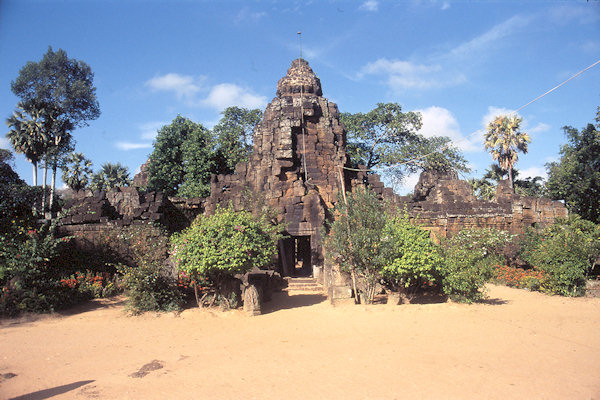 |
|||||
Ta Prohm
The laterite temple of Ta Prohm was built by King Jayavarman VII on the site of an ancient 6th-century Khmer shrine.
The main sanctuary consists of five chambers; in each is a "linga" (phallic symbol), all of which show signs of destruction
wrought by the Khmer Rouge.
The wall was decorated with bas-reliefs illustrating Hindu myths, some of them are on the ground in front of the temple.
In the main sanctuary an original 13th century Buddha statue faces east.
A sandstone carving depicting a reclining Buddha in situ above the main door of the sanctuary.
On the temple walls, well-preserved in one particular area are carvings of devatas. Deva is the Hindu term for deity. A devata is
the divine guardian spirit of sacred places.
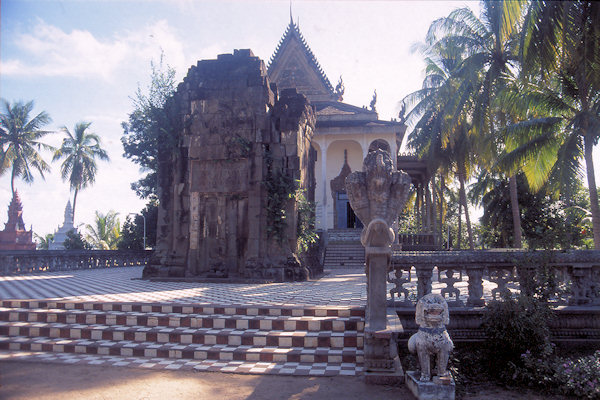 |
|||||
Yeay Peau
Yeay Peau temple, named after King Ta Prohm's mother is 150 m north of Ta Prohm and consists of is a single sandstone tower
situated adjacent to an active pagoda.
Legend has it that Peau gave birth to a son, Prohm. When Prohm discovered his father was King Preah Ket Mealea, he set off to
live with the king.
After a few years, he returned to his mother but did not recognise her and, taken by her beauty, asked het to become his wife. He refused
to believe Peau's protest that she was his mother.
To settle the mater, Peau suggested that she and Prohm build a temple; whoever finished first would het their way.
The contest was held at night, with the woman helping Peau and the men helping Prohm. After many hours, Peau sent aloft an artificial
morning star. The men, thinking it was dawn, went to sleep. Meanwhile Peau's temple was completed and Prohm, defeated, recognised Peau
as his mother.